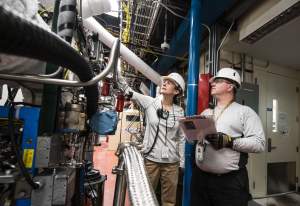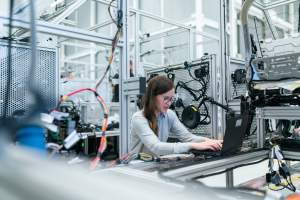Description
Presented by : William A. Levinson, P.E.
Aired Time : Available OnDemand
Duration : 60 minutes
Understand the Financial Benefits of Integrating ISO 50001 & ISO 14001
ISO 14001: 2015 and ISO 50001: 2018 are structured similarly to ISO 9001:2015, and with similar focus—such as on the context of the organization, and needs and expectations of interested parties. But like most users, you probably don’t know the bottom line benefits of integrating the key aspects of the two standards (ISO 50001 and ISO 14001). Because with the right commitment, this can help improve efficiency and lead to financial and business benefits—as opposed to merely complying with the mandatory regulations set by the Environmental Protection Agency (or corresponding non-U.S. regulatory entities) that can cost you money for pollution control and waste disposal.
Learn the benefits of integrating the key aspects of the two standards (material and energy review) and exceeding the requirements of ISO 14001 in this informative webinar by industry expert William A. Levinson. Levinson will explain some of the simple yet important principles of waste reduction—such as Shigeo Shingo’s “Paint parts, not air,” and “grease parts, not scrap metal”—and familiarize you with the role of design for manufacturing, a principle that dates back to Henry Ford in reducing material waste, such as that from machining. He will explain why your organization must consider all material wastes (as opposed to only the environmental aspects covered by ISO 14001) to realize the full benefits of an environmental management system. You will learn how zero emission manufacturing, a goal sought and largely achieved by Henry Ford a century ago, delivered enormous payouts to the bottom line in the form of higher wages and lower prices as well as profits. You will also learn how to perform a material and energy balance to force all forms of material and energy waste to become visible (thus supporting the material and energy review that adapts ISO 50001’s clauses to material stock and consumables).
After attending this session, you will understand and be able to explain to the stakeholders in your organization the financial and business benefits of using both standards (ISO 50001 and ISO 14001)—and exceed the requirements of ISO 14001 by addressing all forms of material waste.
Session Objectives
After attending this session, you will:
- Understand and be able to explain the benefits of ISO 14001 and ISO 50001 to the key stakeholders in your organization, including upper management that must support implementation, in the proven language of money.
- Recognize that your organization must consider all material wastes, as opposed to only the environmental aspects covered by ISO 14001, to realize the full benefits of an environmental management system.
- Know the simple yet important principles for waste reduction, e.g. Shigeo Shingo’s “Paint parts, not air,” and “grease parts, not scrap metal.”
- Recognize the role of design for manufacturing—a principle that dates back to Henry Ford—in reducing material waste such as that from machining.
- Know how to perform a material and energy balance to force all forms of material and energy waste to become visible.
Session Highlights
This webinar will cover the following topics:
- The standard should be the organization’s servant rather than its master, and its application should deliver quantifiable economic benefits.
- How ISO 14001 and ISO 50001 (the latter through promotion of energy efficiency) can serve all relevant interested parties, along with Henry Ford’s example of how avoidance or re-use can:
- Contribute enormously to the bottom line
- Deliver lower prices for customers
- Generate higher wages for employees
- Create higher profits for investors
- Why all organizational stakeholders should recognize that anything that is thrown away, even if it is NOT a pollutant or environmental aspect, represents wasted resources, and therefore wasted money.
- ISO 50001:2018’s clauses 6.3 through 6.6 (Energy Reviews, Energy Performance Indicators, Energy Baseline, and Planning for Collection of Energy Data) have no counterparts in ISO 14001:2015 but can be easily adapted to support a material review as well as an energy review. The idea is to expose all forms of material waste to support “Refuse, Reduce, Reuse, and Recycle” regardless of whether the waste is an environmental aspect.
- SIPOC (Supplier, Input, Process, Output, Customer) process approach promoted by ISO 9001
- How “Dumpster diving” can identify material wastes quickly
Handouts
- PDF of slides, notes, and references
Who Should Attend
- Managers
- Staff responsible for environmental and energy management systems
- Lean manufacturing practitioners
This event brought to you by AudioSolutionz
(WiseQuestion is learner supported. When you buy through links on our site, we may earn an affiliate commission)
About the Speaker

William A. Levinson, P.E., is the principal of Levinson Productivity Systems, P.C. He is an ASQ Fellow, Certified Quality Engineer, Quality Auditor, Quality Manager, Reliability Engineer, and Six Sigma Black Belt. He is also the author of several books on quality, productivity, and management, of which the most recent is The Expanded and Annotated My Life and Work: Henry Ford’s Universal Code for World-Class Success.
07022019





